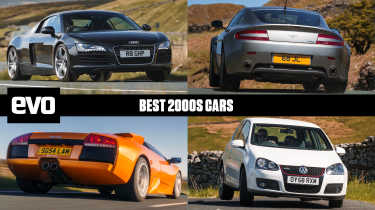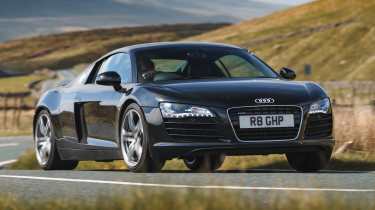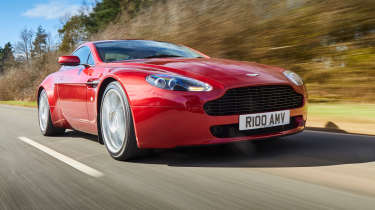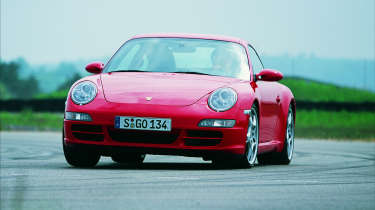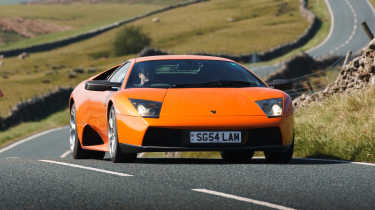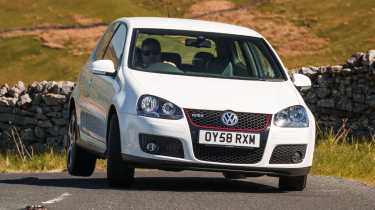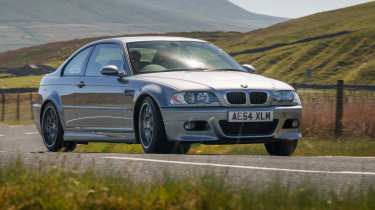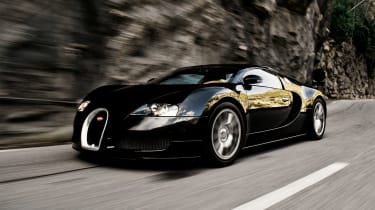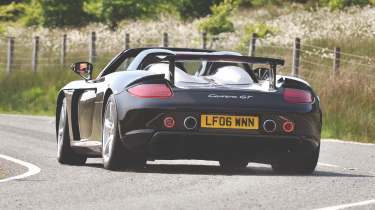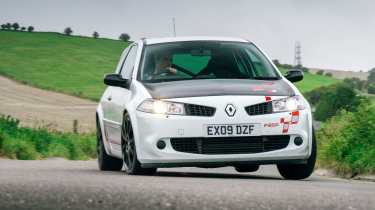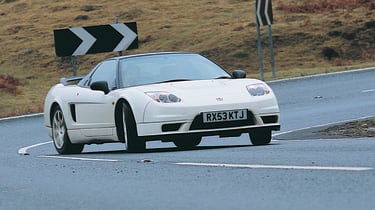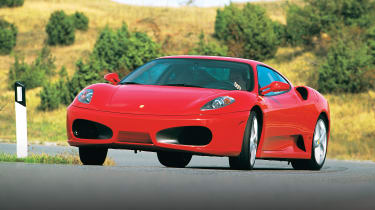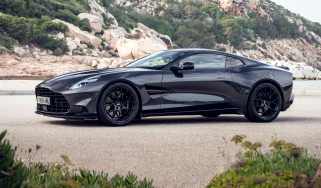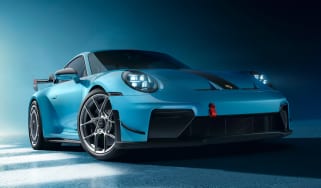Best cars of the 2000s – the best cars from the best of times
The 2000s was a decade that went supernova for the performance car market. We count down just a few of the very best cars of the decade
This one was always going to be a proper monster to write because the performance car market went supernova in the 2000s. Credit was freely available which helped demand, as did exposure for these sorts of cars in the equally explosive and fertile motoring media landscape of the 2000s. Whether on the newsstand at Woolworths or on your TV of a Sunday night at 8pm, there was no escaping some kind of exposure to the burgeoning performance car landscape at the time.
The cars themselves too were getting faster yet safer, more expressive yet more efficient, better quality yet cheaper to make and more advanced yet still relatively compact and lightweight. It’s an overused expression but it really was a goldilocks zone – where technology was a help not a hindrance and the grip of emissions and safety regulations had yet to reach a stranglehold.
Picking between such a wide and talented selection of performance cars was always going to be a near impossibility. Testament to this was the fact that while our Eras tests were designed to create a poignant cross section of a decade, rather than gather together the very best cars from it, our 2000s selection does happen to be a handful of the very best. It’s these along with a number of other stars, that are our favourite cars of the 2000s.
Audi R8 V8
Cars that give the Porsche 911 a good duffing-up don’t come around very often, but that makes them all the more exciting when they do. In the 1990s, that car was the Honda NSX. In the 2000s, it was another everyday-usable supercar, 2006’s Audi R8. Audi was still in its image-building ascendancy in the 2000s but the R8 was on another level entirely, its similarity to the Lamborghini Gallardo launched a few years earlier lifting it to an altogether higher plane.
> Audi R8 V8 (2007 - 2015) review – the Porsche 911’s equal is a bargain super sports car
Unlike the Lambo though the R8 used V8 power (at least initially), sharing its 4.2-litre unit with the talented Audi RS4 launched the same year. You can get an Audi hot hatch these days with almost as much power as the R8’s 414bhp, but that was easily in the 911 ballpark in the mid-2000s, and with a tactile open-gated gearshift and positioned in the middle of the car, R8 drivers were given all the tools they needed to exploit it. The R8 was all-wheel drive too but it felt like a proper rear-driver, and the handling was so balanced, so far removed from Audi’s usually stodgy standards, you could swear it had been developed by Lotus.
Aston Martin V8 Vantage
You have to feel for those penning Aston Martin’s current range. The brand has some great shapes in its portfolio, but has anything it’s launched since the turn of the millennium looked quite as smart or handsome as 2005’s V8 Vantage? We don’t tend to dwell on aesthetics here at evo but Henrik Fisker’s shape has to be one of the decade’s best – and the car it was draped over was pretty good too.
> Aston Martin V8 Vantage (2005 - 2017) – Aston’s ‘baby’ aimed squarely at the Porsche 911
The V8 Vantage started out with a growling 4.3-litre V8 making 380bhp and driving the rear wheels through a transaxle gearbox. It didn’t have the all-round polish of a 911, but it didn’t really matter, as it was fun to drive and bursting with character. And Aston only improved it over the years; the engine grew to 4.7 litres, the steering got quicker, the brakes more powerful, and AML offered several special editions that took it well into the following decade – and that’s before you even get to the spectacular V12 Vantage.
Porsche 911 997 Carrera S
You could make a fairly convincing argument for the 997 Carrera S being the Goldilocks 911. While it’s not hugely different in size from the 991 that replaced it (about 6cm shorter, 3cm lower, and the same width in like-for-like narrow-body form), it feels more compact than later 911s thanks to its upright windscreen and intimate cabin, and that alone makes a big difference to how you drive and interact with it on the road.
> Used Porsche 911 (997, 2004 - 2012) – the ultimate sweet spot 911
Then there are the other details. A similar mechanical makeup to the first water-cooled 911, the 996, but improved upon in every little area. More traditional styling and better build quality than the 996. The retention of hydraulic power assistance for the steering, something the 991 dropped. Standard Porsche Active Suspension Management in the Carrera S, and a 350bhp output from the 3.8-litre flat six, which feels like plenty on a good road, especially with the slightly grittier sound of these earlier watercooled flat sixes for some aural character. Possibly the perfect blend between modern usability and an old-school 911 feel.
Lamborghini Murciélago
The Lamborghini Murciélago had big boots to fill given it replaced the Diablo, but there’s no doubt it was by leaps and bounds the better car. Still powered by the iconic Bizzarrini-designed V12, the Murciélago’s Luc Donckerwolke styling and Audi-enforced levels of quality set the tone for every Lamborghini to follow in the 21st century.
> Lamborghini Murciélago (2001 - 2011) review – an unadulterated supercar icon
When we revisited the Murciélago in our evo Eras test, we rediscovered that it was far from being sanitised either. It still feels big and intimidating, requires a bit of effort to drive, and when it’s up on its toes, you can start to feel the pendulum of that enormous engine behind you too – so it’s not a car that suffers fools. Undoubtedly exciting though and still an attention-getter, while the improved quality is one reason that evo contributor Simon George has amassed more than 300,000 miles on his, albeit with one or two Lamborghini-sized bills along the way.
Volkswagen Golf GTI (Mk5)
You can at least partly thank the Mk3 and Mk4 Golf GTIs for the Mk5 GTI’s warm reception. Its two most recent predecessors were so underwhelming that almost anything would’ve been an improvement. But the Mk5 Golf GTI was simply a great car, and a great hot hatchback in its own right – a real return to form for the GTI badge after more than a decade in the mire.
> Used Volkswagen Golf GTI (Mk5, 2004 - 2009) review – one of the best VWs of the last 30 years
It wasn’t a groundbreaking car, so much as one that got almost everything right. Inherent sophistication helped, with a multilink rear suspension setup and a new 2-litre turbocharged engine, but it was simply well-tuned too, feeling right at home on the UK roads that undid so many other fast hatches. It was balanced without being edgy, and the control weights were all pretty good too. Notably, while there have been good GTIs since, most have only improved incrementally on the Mk5, rather than the gigantic leap the Mk5 took over the cars that came before it.
Mini Cooper S (R53)
Mini’s 2001 revival has to be one of the most anticipated of any vehicle, and it became an instant must-have car. Even in basic form with well under 100bhp the “new Mini” drove well, and evo has a fondness for a basic “R50” Cooper on 15-inch wheels with skinny tyres, but the car that best represents Mini in the 2000s is the “R53” Cooper S, with its supercharged version of the 1.6-litre four-cylinder found in the Cooper.
> Mini Cooper and Cooper S (2001 - 2006) review – the 'new' Mini is now a classic
The unit made 163bhp, which doesn’t sound all that impressive by 2025’s standards, but in 2002 it was right on the pace, just a little shy of the class-leading Clio 172. Good though the Clio was, the fashionable Mini smashed it for style, and was a hoot to drive too, being addictively nimble. The supercharged motor meant power throughout the rev range rather than a soaring peak but it was a useful increase over the unblown 114bhp. That this 2000s icon is a 2020s bargain means it’s still very desirable today.
BMW M3 (E46)
It’s cars like the E46 BMW M3 that make people nostalgic for the 2000s. Here was a relatively compact platform that packed a 3.2-litre inline six making 338bhp with an 8000rpm redline, and where a paddleshift gearbox was merely a sideshow to the standard six-speed manual. The E46 M3 looked pretty good too, more pumped-up than its E36 predecessor, but still on the understated side for a high-performance car.
> Used BMW M3 (E46, 2000 - 2006): an analogue sports coupe icon
Driving the car again in our 2000s test, the M3’s poise, composure, and balance all stood out too, as did the surprisingly pliant ride on its 18-inch alloy wheels – a choice that many overlooked in favour of the more fashionable 19-inch options at the time. The character and response of the “S54” engine makes the car, feeling every bit a Motorsport-developed unit, but as an all-round package it was enough to give the contemporary Porsche 996 a scare.
Bugatti Veyron
Where do you start with the Bugatti Veyron? Its performance has since been eclipsed but it will forever stand as one of the supercar icons – a car that can blast up to 250mph given enough space but is little more taxing to drive at slightly more human speeds than a Golf with a DSG ‘box.
> Bugatti Veyron (2005 - 2015): review, history and specs of an icon
You could get a kick from the Veyron’s engineering alone, not least because anyone with an understanding of the car business would be blown away at how Bugatti had even managed to get the thing to market. It almost didn’t happen, given Ferdinand Piëch’s near-impossible goals, but presumably one menacing gaze is all it took for most engineers to capitulate and find a new solution to a problem. The result was a quad-turbocharged 8-litre W16 crammed into a car just 30mm longer than a Porsche 996. It was genuinely good to drive too, even if you ignored the rampant performance.
Pagani Zonda C12 S 7.3
The Pagani Zonda narrowly debuted in the 1990s, but it feels like a supercar of the 2000s, and when the C12 S arrived in 2002 it became one. Actually it became two, since the S debuted in 7-litre and also 7.3-litre forms, the latter making 547bhp from its AMG-sourced V12.
> Pagani Zonda (1999 - 2019): the analogue supercar icon
It was a C12 S 7.3, of course, that evo founder Harry Metcalfe was fortunate enough to call his own for a while, making this particular model something rather close to our hearts. Harry managed to cover around 10,000 miles in his first year with the car, a sign as much of the car’s usability (width aside) as his compulsion to get out in the thing whenever possible. It proved exciting on a couple of long road trips too, and it’s probably fair to say that even today, nothing else looks quite like a Zonda.
Porsche Carrera GT
Porsche couldn’t have chosen a better home for the engineering it put into a V10 engine developed first for F1 and then endurance racing. When neither of those happened, the company designed a carbonfibre-tubbed supercar for it to sit in instead, showed it as a concept car at Geneva in 2000, and put the road-going Carrera GT into production in 2003.
> Porsche Carrera GT – review, history, prices and specs
The result was a 604bhp supercar that sounded divine and weighed in at only 1380kg. Oh, and had a manual gearbox too, operated via a beechwood gearknob designed to evoke that of the 917 racer. Like the similarly analogue Ferrari F50 of the previous decade it was nominally a roadster with a hard removable panel acting as a roof – when off, perfect for listening to that howling V10. Driving it in 2005, we noticed it felt a little edgy in wet weather, but the car’s precise, racer-like responses are also what makes it a thrill to drive.
Renault Sport Mégane R26.R
From the slightly underwhelming Mégane 225 of 2004, Renault (and specifically Renault Sport) slowly turned the second generation Mégane into one of the best hot hatchbacks on sale over the following years – a little more precision here, more steering feel there. The R26 of 2007 fought for class honours, but 2008’s R26.R has become an all-time great.
> Renault Sport Mégane R26.R (2008 - 2009) review – Dieppe's finest hour
The recipe was one we’d seen before, albeit not often on a hot hatchback: exotic materials to reduce weight, a half-cage rather than rear seats, a pair of bucket seats, and then a chassis tuned to take advantage of the weight savings. The result was a car that was sharper and more involving than the regular R26, but also even more pliant over craggy road surfaces, and made better use of the same 222bhp output as other RS Méganes – augmented by a blast-furnace roar from an Akrapovic titanium exhaust. Renault struggled to shift them back in the day, but owners have the last laugh; you’ll pay upwards of £30,000 for one today.
Honda NSX-R
Along with the Lotus Evora elsewhere on this page, the Honda NSX-R is equally the least-powerful car ever to win eCoty. Which tells you everything you need to know about how little outright power really matters to the best driver’s cars – it’s the way a car uses its power in concert with the chassis and controls that really separates the great from the merely good. And the NSX-R is one of the greats.
It had good bones already, the NSX that arrived in 1990 making a Porsche 911 feel ancient and a Ferrari 348 underdeveloped. Japan got an NSX-R all the way back in 1992 - indeed, it’s where the R badge originated – but our eCoty winner arrived in 2002, featuring wider use of carbonfibre and obsessively precise standards of engine-building, which almost certainly made it more powerful than the 276bhp advertised. On driving the car again in 2023, we discovered a car second only to one of evo’s favourite ever cars, the Ferrari 458 Speciale, for driver appeal; not bad for a car with less than half the power.
Ford GT
Certain cars stand out in the pantheon of former eCoty winners. Porsches, Ferraris, McLarens and more recently BMWs are no great surprise. But every so often there’s a Nissan, Honda, Lotus, or in 2005, a Ford that takes the crown. Not that 2005’s winner was the usual Ford fare of a hatchback sprinkled with fairy dust – instead, it was the brand’s revival of the Le Mans-winning GT40: the Ford GT.
> Ford GT (2004 - 2006) review: Ford's supercar Ferrari beater
As retro remakes go, it couldn’t have been much better. This one didn’t win Le Mans but it did win our hearts, with a supercharged 5.4-litre V8 and a manual gearbox sitting amidships in a chassis of remarkable polish. The steering had fantastic feel and delicacy, the performance was explosive but manageable, the brakes were packed with feel and power, and the manual ‘box felt perfect too.
Lotus Evora
Yet another eCoty winner, this time in 2009. Drive an Evora today, and its win comes as little surprise – it still packs all the qualities that helped it top our table back in 2009, and indeed it kept those qualities, enhanced by extra power and attitude, all the way until production ended in 2021. Much has been made about how the current Emira is a car that can mix it with Porsche, but the same was true of the Evora more than 15 years ago.
> Used Lotus Evora (2009 - 2021): review, specs and buying guide
The early models look almost tame now, with “only” 276bhp, but then its power-to-weight ratio is in the same ballpark as a basic Alpine A110, and that car’s 248bhp has hardly hindered it. The Evora’s 3.5-litre Toyota V6 gave it a distinctive soundtrack (and no small degree of reliability), the cab-forward driving position provided a great view out, and despite power assistance, the steering fed Elise-style information to your fingertips. Like most Lotus sports cars, it remains perfectly suited to UK roads too – as pliant as it is responsive.
Renault Sport Clio 182 Trophy
It’s telling that Renault has not just one but two of our favourite hot hatchbacks of the 2000s – the Megane R26.R, and the Clio 182 Trophy. In fact, two of the best of all time, never mind just a single decade. Renault Sport was on a roll, and like the Megane, the Clio Trophy was the culmination of years of development to perfect a formula.
> Renault Sport Clio 182 Trophy (2005) review – an all-time great hot hatch
The steps from the original 172, to the facelifted car, the Clio Cup, the 182, 182 Cup, and then Trophy were small in sequence but profound when considered all together. One component is often given as the reason for the Trophy’s genius, its remote-reservoir Sachs dampers, and while they undoubtedly played a part, the fact is they simply elevated an already brilliant fast hatch even further. The punchy 2-litre engine, keen steering, and adjustable balance were all there already; the dampers just gave you even more control when the road became really demanding.
Best of the rest
The best sign of the quality of driver’s cars being offered in the 2000s is that we can’t fit them all in. From Ferrari alone we can list the evolutionary but worthwhile improvements of the 360-replacing F430, the supremely talented 599 (surely one of the best performance GTs of the decade) and the F1-inspired Enzo, but equally significant is how we didn’t even make a place above for the 997 Porsche 911 GT3 RS.
Likewise, we felt the Murcielago was more significant than the smaller Gallardo, but we’d still not kick the mid-engined V10 out of our dream garage. Over the pond Chevrolet was really getting to grips with its iconic Corvette with the 2005-on C6 generation Z06, and further afield, Toyota, through its luxury Lexus division, released the IS F – an underrated sports saloon with a V8 engine that would endure in several subsequent fast Lexus.
Audi’s V8-powered B7 RS4 had debuted in 2006, BMW’s V8 E90/E92 M3 arrived shortly after the Lexus, and the W204 Mercedes-Benz C63 AMG in 2008 – showing eight cylinders were now essential in the class. AMG had already given us the CLK 63 Black Series in 2007, another iconic V8 sports car, but not all of the decade’s favourites needed a V8: the searing 197bhp, 2-litre, 8000rpm EP3 Civic Type-R from Honda was great fun and at £16k, a performance bargain.

